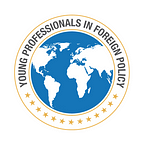Learning from Climate Strikers: How to Increase Popular Engagement in International Relations
By Jennifer Zhang
The foreign policy community puts out thousands of reports and position papers each year. Yet, these publications often receive little attention outside of diplomatic circles and vanish into a vortex of briefings and communiqués whose recommendations are rarely carried out.
Reasons for low engagement
This lack of interest can potentially be traced to the steep learning one experiences when studying international relations for the first time. Foreign policy publications typically include a plethora of abbreviations and verbiage. However, the 2019 G20 Leaders’ Declaration — a document published annually by heads of State from G20 countries — is considerably more readable than most foreign policy papers. Even so, it still uses terms, such as Society 5.0, the 2030 Agenda, BEPS (base erosion and profit sharing), the Addis Ababa Action Agenda and EPGs (eminent persons groups) with little to no explanation. And while most papers include the expanded forms of these abbreviations, they are usually not explained.
Moreover, diplomacy tends to be one of the least democratic functions of government. Presidential and parliamentary systems give executive leaders near exclusive control over non-war and non-treaty related forms of diplomacy; however, the alternative can sometimes go awry. Brexit, the result of the United Kingdom’s last major referendum, serves as a cautionary tale for governments looking to make policy decisions democratically. Individual citizens with resources can engage the foreign policy community by attending conferences and networking in the community, but these paths to power are extremely limited.
The exception
While foreign policy may sometimes seem inaccessible, one group is increasingly finding themselves a part of the discussion — Generation Z. Young people in secondary schools have become the driving force behind climate activism, both engaging and deriding global institutions.
One of the largest examples of this is the Global Climate Strike. Participating students walk out of school to march in the streets in protest, gathering under the slogan Fridays for Future. Approximately 1.4 million people across 123 countries took part in its first major global strike on March 15, 2019. The movement has garnered significant attention, in large part because teenagers lead it. Greta Thunberg, a 16-year-old Swedish climate activist, started the strike in 2018 in a protest outside the Swedish parliament building. During a Sky News interview, she said, “We are just children. We shouldn’t have to do this. The adults should take responsibility.”
This movement is to-the-point and has attracted a lot of media attention. Though the climate crisis is complicated, like most issues of international importance, it can be communicated in a concise and memorable manner, like “climate justice.” Leveraging this simplicity, most youth-led movements have been effective on social media, highlighting the urgency of climate change through Tweets and internet memes. It is living proof that climate awareness has moved out of professional circles and into ordinary life.
Activists are also now recognized by global institutions. For example, Jerome Foster II, a 17-year-old American activist who protested climate change outside the White House and started the Climate Reporter, recently spoke at a panel at the 2019 United Nations High-Level Political Forum. He and other young activists discussed climate justice in the backdrop of dismantling residual colonialism, recognizing indigenous groups, ending discrimination, economic reform, and the U.N. Sustainable Development Goals (SDGs). During a follow-up phone interview, he discussed the injustice of climate change:
The climate crisis is about more than polar bears dying; it’s inequality that’s fueling it. We can’t get out of the climate crisis with the same system that we have now. We’re going to have to change our socioeconomic systems to work with the earth and not against it … and we should give indigenous people a seat at the table to do that. Consumers shouldn’t have to be the moral compass of society. It should be the corporations who decided to pollute the world who have to clean it up.
Foster’s words are clear and understandable. And there are valuable lessons that can be learned from them.
Conclusion
Task forces and working groups that produce papers on topics of international importance should not dumb down their writing but should be concise. Media-savvy contributors can make condensed, one-page, or one-image versions of publications that can explain the situation while avoiding jargon. These shortened, accessible versions can be disseminated on social media using elements of Twitter culture to boost their popularity. Social media platforms are built for two-way communication, and organizations should use them this way. A good example are the SDGs. A public relations firm placed them in digestible graphics and promoted them on social media.
Active youth engagement should be a key indicator of whether ideas are reaching people outside the diplomatic community. Moreover, these ideas must be high quality, understandable, and accessible to have an impact. Greta Thunberg has shown that when young people pay attention, the world pays attention.
Jennifer Zhang is a youth policy advocate and Lead Ambassador with Knovva Academy, an international education organization. She was a speaker and teenage youth representative at the 2018 and 2019 Youth 20 summits. She is currently studying political science at Columbia University.
